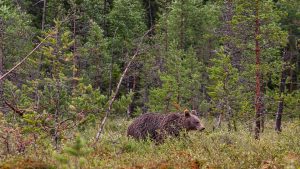Wildlife problem individual
A wild animal is called a “problem individual” if that particular animal shows repetitive behaviour that is causing conflict with humans. Such behaviour includes: coming regularly close to human settlements; approaching humans too closely; predating on domestic animals; damaging human property.
There is seldom anything “wrong” with problem individuals, like illness or injury, but rather there is something wrong with the environment in which they live. The most common reasons for an animal to become a problem individual are: invasion of their habitat by humans; shortage of natural food sources; humans’ deliberate habituation of wildlife in order to photograph them, hunt them or simply watch them. Normally, the behaviour will not cease by itself and mitigation actions by wildlife managers is needed.



 This project (EDU-ARCTIC) has received funding from the European Union’s Horizon 2020 research and innovation programme under grant agreement No 710240. The content of the website is the sole responsibility of the Consortium and it does not represent the opinion of the European Commission, and the Commission is not responsible for any use that might be made of information contained.
This project (EDU-ARCTIC) has received funding from the European Union’s Horizon 2020 research and innovation programme under grant agreement No 710240. The content of the website is the sole responsibility of the Consortium and it does not represent the opinion of the European Commission, and the Commission is not responsible for any use that might be made of information contained.